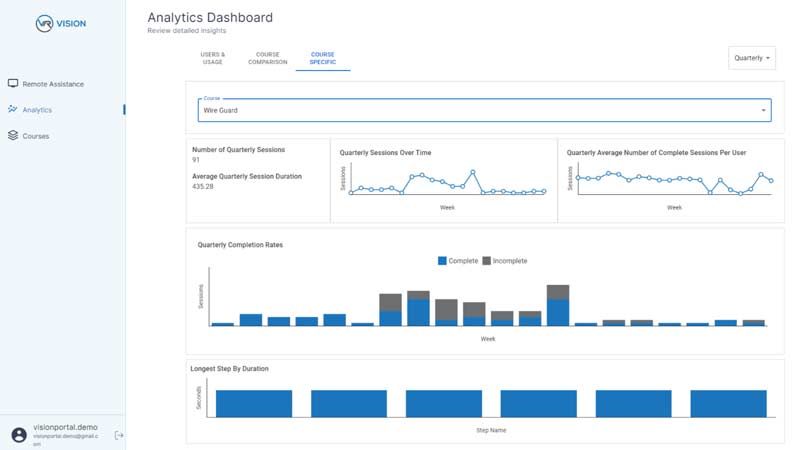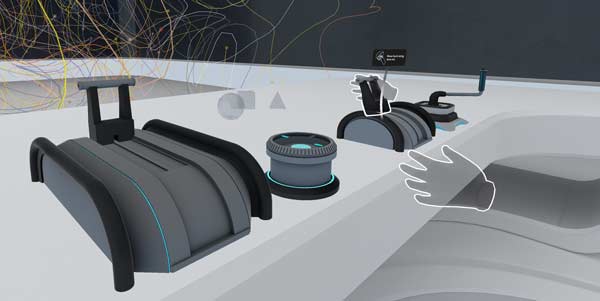Immersive learning solutions are transforming today’s enterprise training market, offering innovative ways to bridge skill gaps and enhance employee development. As digital transformation accelerates, traditional training methods are becoming less effective, especially with the rise of hybrid and remote work environments. Today we’re going to look at immersive technologies and their benefits and adoption curve, and why organizations should seriously considering using XR technology for training and skill sharing. So without further adieu here’s why investing in immersive learning solutions is crucial for companies in 2024.
1. Improved Knowledge Retention for Immersive Learning
Traditional training methods often result in poor knowledge retention, with employees forgetting up to 70% of what they learn within 24 hours. Immersive learning, however, leverages multi-sensory feedback, storytelling, and hands-on simulations to create experiential learning environments. Research shows that while students remember only 30% of what they hear and 20% of what they see, they recall up to 90% of what they experience. By using realistic simulations and interactive experiences, employees can better retain and apply their knowledge, leading to long-term performance improvements.

Avangrid Renewables Turbine Part Replacement Simulation
A prime example of the effectiveness of immersive learning is our case study with Avangrid, a leading energy services and delivery company. Avangrid implemented VR Vision’s immersive training solutions to enhance their maintenance and repair training programs. The results were remarkable: employees completed their training 65% faster in VR compared to traditional real-world training methods. This significant improvement not only reduced training time but also ensured that employees retained critical information more effectively. The immersive nature of VR allowed trainees to practice complex procedures repeatedly in a controlled, risk-free environment, thereby solidifying their skills and boosting their confidence.
The success with Avangrid shows the potential of immersive learning to transform training outcomes. By incorporating VR into their training programs, companies can achieve faster, more efficient learning while ensuring that employees are well-prepared to handle real-world challenges. This case study highlights how immersive learning not only improves knowledge retention but also accelerates the overall training process, providing a powerful return on investment for forward-thinking organizations.
2. Reduced Risk and Enhanced Safety Training
One of the significant advantages of immersive learning is its ability to provide hands-on experience without the associated risks. Employees can practice operating heavy machinery, performing surgical procedures, or responding to emergencies in a virtual environment without any real-world dangers. This not only improves workplace safety but also builds confidence and engagement. Studies indicate that immersive training can reduce workplace injuries by up to 43%, making it an invaluable tool for high-risk industries.

Hydro One Customer Support Center Training (In-Field Workers)
Our collaboration with Hydro One, one of the largest electricity transmission and distribution companies in Canada, is a testament to the power of immersive learning in enhancing safety and reducing risks. Hydro One faced the challenge of training 2000 support center representatives to understand the real-world actions of in-field workers. This allowed support center representatives to experience the complexities of field operations, including emergency responses, equipment handling, and safety protocols, without any exposure to real-world hazards.
The results were impressive. Hydro One reported a marked improvement in safety compliance and a reduction in training-related incidents. Support center representatives could view all in-field tasks and procedures, leading to greater understanding of the technicians work and fewer mistakes in their support roles. Additionally, the immersive training helped bridge the gap between field workers and support staff, fostering better understanding and communication within the organization. This case study demonstrates the profound impact of immersive learning on workplace safety and communication, showing that VR-based training solutions can mitigate risks, enhance employee preparedness, and ultimately create a more cohesive and safer working environment.
3. Valuable Insights and Detailed Analytics
Traditional training programs often struggle to track and measure their effectiveness. Immersive learning solutions, however, come equipped with advanced analytics tools that provide detailed insights into employee performance and engagement. With VR Vision’s Vision Portal, companies can gain even deeper insights and more comprehensive data. The Vision Portal allows for real-time monitoring of how employees respond to various scenarios, tracking their progress, and even analyzing physiological responses such as heart rate and eye movement. This rich dataset enables managers to offer targeted feedback and tailor training programs to meet individual needs, resulting in more effective and personalized learning experiences.

Vision Portal 2.0 Analytics Dashboard
Moreover, the Vision Portal integrates seamlessly with existing Learning Management Systems (LMS), ensuring that all training data is centralized and easily accessible. This integration facilitates a holistic view of an employee’s training journey, helping organizations identify patterns and trends that can inform future training initiatives. By leveraging the Vision Portal’s advanced analytics, companies can continuously improve their training programs, boost employee engagement, and drive higher performance levels across the board. The ability to record sessions and replay them for detailed analysis further enhances the quality of feedback and development plans, ensuring that every employee reaches their full potential.
4. Boosted Participation and Completion Rates
Engaging employees in continuous learning is essential for staying competitive, yet many traditional training programs fail to capture their interest. Immersive learning addresses this issue by creating engaging, gamified experiences that hold employees’ attention. By eliminating distractions and providing interactive, hands-on training, immersive solutions significantly increase participation and completion rates. Employees are more likely to engage with and complete training programs that are both enjoyable and relevant to their roles.

Vision Tutorial – Learning the Basics of VR Hardware
To further enhance these benefits, VR Vision offers the Vision Tutorial, an introductory simulation designed to teach newcomers how to use virtual reality hardware effectively. This tutorial helps users become familiar with VR equipment, interfaces, and controls, reducing initial apprehensions and ensuring a smooth transition into immersive learning environments. By making VR more accessible and user-friendly, the Vision Tutorial boosts participation rates and ensures that employees are comfortable and proficient with the technology, leading to higher completion rates and a more engaged, skilled workforce.
5. Cost-Effective and Environmentally Friendly
While the initial investment in immersive learning solutions may seem high, they often prove to be more cost-effective in the long run. These solutions reduce the need for physical training facilities, travel, and downtime associated with traditional training methods. Companies can save up to 30-70% in training costs by implementing XR initiatives. Additionally, immersive training is environmentally friendly, as it eliminates the need for physical materials and reduces the carbon footprint associated with travel. One study by PwC showed that VR trained employees were up to four times more focused during their training that their e-learning peers and 1.5x more focused that classroom learners. VR enables learners to be fully immersed which makes training faster and more effective, thus reducing overall costs and overall training outcomes.
Conclusion & Final Thoughts
Investing in immersive learning solutions in 2024 is not just a trend but a strategic move to enhance employee training and development. These solutions significantly improve knowledge retention by offering interactive, multi-sensory experiences that help employees better absorb and apply new information. They also provide realistic, hands-on training in a risk-free environment, boosting confidence and competence in real-world scenarios. Furthermore, immersive learning solutions are equipped with advanced analytics tools that offer valuable insights into employee performance, allowing organizations to tailor training programs to meet individual needs and enhance overall effectiveness.
As technology continues to advance, the capabilities and accessibility of immersive learning will only increase, making it an essential component of modern corporate training programs. By adopting these solutions now, organizations can future-proof their workforce, ensuring that employees are equipped with the skills and knowledge they need to thrive in an ever-evolving landscape. Embracing immersive learning not only enhances engagement and participation but also offers substantial long-term cost savings through reduced need for physical training facilities and travel. Now is the time to invest in immersive learning solutions, empowering your workforce and setting your organization on the path to success. Feel free to book a demo today and learn how we can help your organization grow with immersive learning technologies.